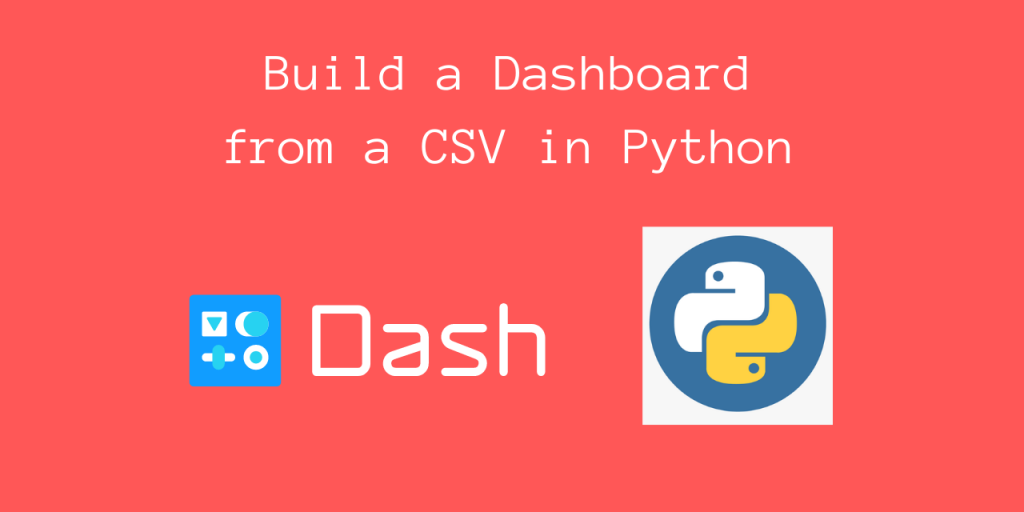Hello readers! In this tutorial, we’ll be looking at how we can quickly build a dashboard in Python using dash, from a CSV file.
Dash is a Python framework that makes it easy for anyone to build dashboards in Python, while not having to deal with the frontend required directly.
Steps to build a dashboard in Python
Let’s now get started and build a dashboard in Python using the dash library to display data from a CSV File!
Step 1: Plot the data using Plotly
We’ll be using a simple CSV file for the data source, namely a COVID time series dataset.
I’m using this COVID-19 dataset from Kaggle. Once you have it ready, we can start using it.
To render the plots, we’ll be using the Python plotly library. To install this library, use:
pip install plotly
Let’s now plot the time series data for various states. We’ll use the Pandas read_csv() function to read the data from our CSV dataset. It’s just 3 simple lines of code!
import plotly.express as px
df = pd.read_csv('covid_19_india.csv')
# Plot the scatterplot using Plotly. We ploy y vs x (#Confirmed vs Date)
fig = px.scatter(df, x='Date', y='Confirmed', color='State/UnionTerritory')
fig.update_traces(mode='markers+lines')
fig.show()
Now plotly should give you a nice visualization of the data. Let’s now render this in our Dash application.
Step 2: Embed the graph with Dash
To render our dashboard application, we’ll be using Dash. Install this library using:
pip install dash
We’ll use dash to render the data in a layout.
Before that, let’s set up some stylesheets (CSS) for our page to look good! I’m using the default data from this dash official tutorial.
import dash
import dash_core_components as dcc
import dash_html_components as html
import plotly.express as px
import pandas as pd
external_stylesheets = ['https://codepen.io/chriddyp/pen/bWLwgP.css']
app = dash.Dash(__name__, external_stylesheets=external_stylesheets)
colors = {
'background': '#F0F8FF',
'text': '#00008B'
}
Let’s now configure our data in this layout.
# Our dataframe
df = pd.read_csv('covid_19_india.csv')
fig = px.scatter(df, x='Date', y='Confirmed', color='State/UnionTerritory')
fig.update_traces(mode='markers+lines')
app.layout = html.Div(children=[
html.H1(children='COVID-19 Time Series Dashboard'),
html.Div(children='''
COVID-19 Dashboard: India.
'''),
dcc.Graph(
id='example-graph',
figure=fig
)
])
Step 3: Run the application server with Flask
Now, let’s finally run the application server (via Flask):
if __name__ == '__main__':
app.run_server(debug=True)
This will start the server on local port 8050. Let’s look at the output now, when we go to http://localhost:8050

As you can see, we indeed have a nice looking interactive dashboard in just a few lines of Python code!
Conclusion
In this tutorial, we learned how we could build a dashboard in Python from a CSV file using Dash.
